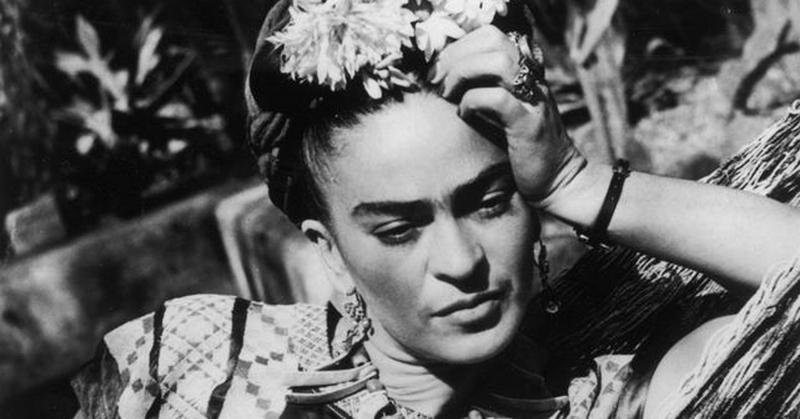Who Was Frida Kahlo?
By | March 5, 2022

She Wanted To Be A Doctor
Renowned artist Frida Kahlo was born in 1907 in Mexico City to a Mexican mother and German father who had immigrated to Mexico in the late 1800s to work as a photographer. Despite the appreciation for the arts instilled in her upbringing, Kahlo originally set her sights on becoming a doctor and was one of the few women accepted to the prestigious National Preparatory School, where she studied biology and science.
But She Had A Lot Of Medical Problems
Much of Kahlo's distinctive art style stems from her complicated and, at times, harrowing relationship with her own body. It all began when she was six years old and contracted polio, which hindered her physical development and left her right leg shorter and smaller than her left. Then, at age 18, the course of Kahlo's life changed completely thanks to a lost umbrella. Heading home from school, she and a friend initially boarded a street bus, but after realizing she'd left her umbrella behind, they decided to turn back and wait for the next one.
They were forced to sit in the back of the crowded bus, which likely saved their lives, as a streetcar slammed into the side of the bus, killing many on board. A long metal handrail pierced Kahlo through the pelvis, her spine broke in three places, her right leg was all but shattered, and her collarbone was fractured. Her recovery was long and arduous, and she never fully healed. The ongoing pain and complications from her injuries deeply affected both her art and her life.

She Had A Really Complicated Love Life
The most impactful relationship of Kahlo's life, outside of her family, was with her on-again, off-again beau, Diego Rivera, also a world-renowned Mexican painter. She initially met Rivera when he worked on a mural at her high school, but when they met again six years later in 1928, they bonded over their love of art and their relationship quickly became romantic. As a muralist, Rivera did a lot of traveling, so Kahlo spent a great deal of time in places like San Francisco and New York, but she was unhappy with traveling and homesick for Mexico.
Despite their intense and passionate connection, Rivera was rarely, if ever, faithful to Kahlo. She had her share of affairs, too, but Rivera went too far when he became involved with her own sister, Cristina. In her despair, Kahlo cut off her hair and began exploring her bisexuality. Rivera and Kahlo always ended up back together, but her pain only continued when she suffered a miscarriage, influencing much of her art at the time. The two never managed to have a child.

She Was A Communist
Kahlo's progressive outlook developed in childhood. She joined the rambunctious political group Los Cachuchas, which opposed the overly strict dress code of the era, as well as the Mexican Communist Party while still in high school. She shared this passion with Rivera, whose infamous mural Man At The Crossroads was originally commissioned by the Rockefeller family but painted over after the artist refused to remove the image of Vladimir Lenin.
But She Was Once Suspected Of Murdering A Marxist Revolutionary
In 1940, Kahlo was held for questioning at a jail in Mexico City under suspicion that she was involved in the death of revolutionary political theorist Leon Trotsky, who had been stabbed with an ice pick by a Soviet agent. Kahlo and Trotsky did indeed share a decade-long friendship that was intermittently romantic, and Trotsky even kept the portrait she painted of him in his office, but police concluded she had nothing to do with his murder.

